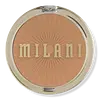What's inside
What's inside
 Key Ingredients
Key Ingredients

 Benefits
Benefits

No benefits
 Concerns
Concerns

 Ingredients Side-by-side
Ingredients Side-by-side

Talc
AbrasiveZea Mays Starch
AbsorbentZinc Stearate
Cosmetic ColorantDimethicone
EmollientMica
Cosmetic ColorantPentaerythrityl Tetraisostearate
EmollientOctyldodecyl Stearoyl Stearate
EmollientCaprylyl Glycol
EmollientSilica
AbrasiveHdi/Trimethylol Hexyllactone Crosspolymer
Nylon-12
Hexylene Glycol
EmulsifyingArgania Spinosa Kernel Oil
EmollientDiisostearyl Malate
EmollientLauroyl Lysine
Skin ConditioningCocos Nucifera Oil
MaskingGardenia Taitensis Flower
Skin ConditioningTocopherol
AntioxidantPhenoxyethanol
PreservativePotassium Sorbate
PreservativeAroma
CI 15850
Cosmetic ColorantCI 19140
Cosmetic ColorantIron Oxides
CI 77742
Cosmetic ColorantCI 77891
Cosmetic ColorantTalc, Zea Mays Starch, Zinc Stearate, Dimethicone, Mica, Pentaerythrityl Tetraisostearate, Octyldodecyl Stearoyl Stearate, Caprylyl Glycol, Silica, Hdi/Trimethylol Hexyllactone Crosspolymer, Nylon-12, Hexylene Glycol, Argania Spinosa Kernel Oil, Diisostearyl Malate, Lauroyl Lysine, Cocos Nucifera Oil, Gardenia Taitensis Flower, Tocopherol, Phenoxyethanol, Potassium Sorbate, Aroma, CI 15850, CI 19140, Iron Oxides, CI 77742, CI 77891
 Reviews
Reviews

Ingredients Explained
These ingredients are found in both products.
Ingredients higher up in an ingredient list are typically present in a larger amount.
This ingredient is used to add a violet color to cosmetics.
It is created by reacting phosphoric acid, ammonium dihydrogen orthophosphate, and manganese dioxide.
Ci 77891 is a white pigment from Titanium dioxide. It is naturally found in minerals such as rutile and ilmenite.
It's main function is to add a white color to cosmetics. It can also be mixed with other colors to create different shades.
Ci 77891 is commonly found in sunscreens due to its ability to block UV rays.
Learn more about CI 77891Dimethicone is a type of synthetic silicone created from natural materials such as quartz.
What it does:
Dimethicone comes in different viscosities:
Depending on the viscosity, dimethicone has different properties.
Ingredients lists don't always show which type is used, so we recommend reaching out to the brand if you have questions about the viscosity.
This ingredient is unlikely to cause irritation because it does not get absorbed into skin. However, people with silicone allergies should be careful about using this ingredient.
Note: Dimethicone may contribute to pilling. This is because it is not oil or water soluble, so pilling may occur when layered with products. When mixed with heavy oils in a formula, the outcome is also quite greasy.
Learn more about DimethiconeTalc is a clay mineral. It helps absorb moisture and improve the texture of products. Like other types of clay, Talc can have a slight exfoliating effect on skin. Talc can be added to increase the volume of products.
Some Baby powders are made by combining talc with corn starch. The word "talc" comes from Latin and originates from Arabic. Talc is a mineral commonly found throughout the world.
If you have any concerns about using talc, we recommend checking out the FDA's official page.
Learn more about TalcZinc Stearate is the metal salt of stearic acid. It is a white solid used to bind, thicken, and lubricate products.
This ingredient is common in powder makeup, where it helps keep the powder together.
Zinc Stearate is hydrophobic and repels water.
This ingredient can be sourced from non-animal or animal sources. It is best to reach out to the brand to see where they source this ingredient from.
Learn more about Zinc StearateThis ingredient is a combination of red, black, and yellow iron oxide pigments. This combination of colors is usually found in foundation, because it results in a "skin" color.